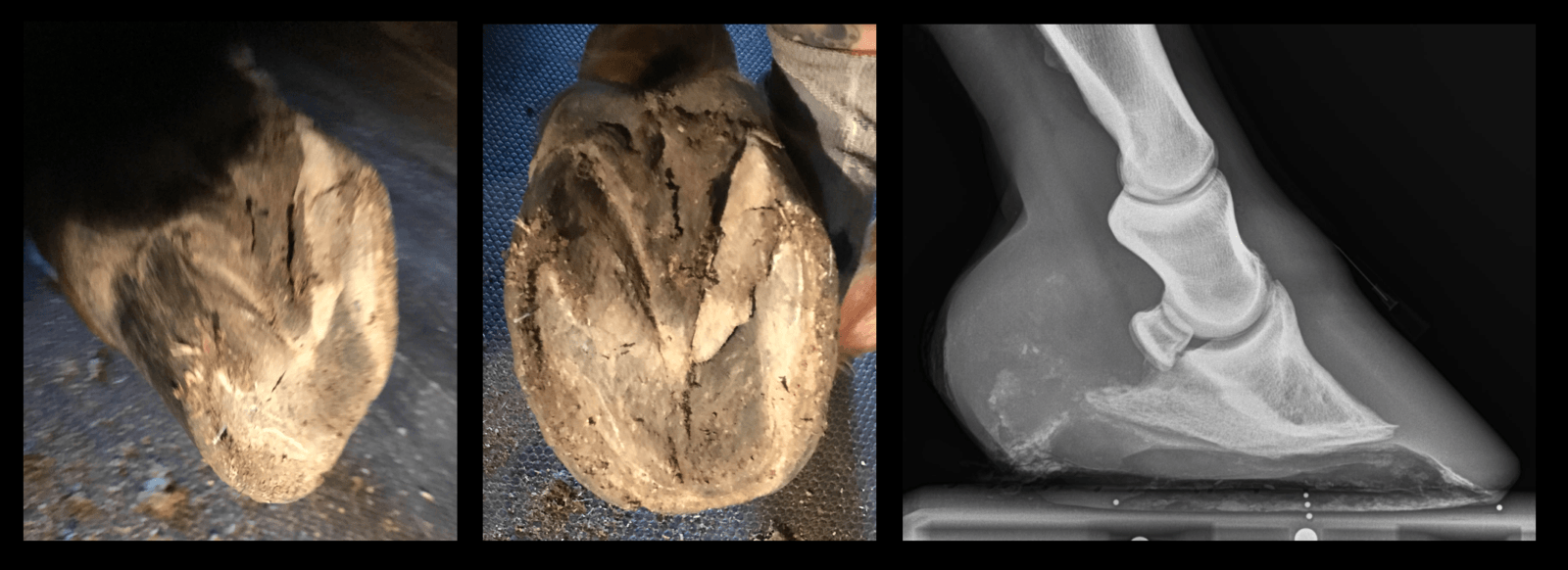In 2012 I wrote a blog about retracted soles, describing an appearance of the sole with seemingly “good concavity and sole callus” that in reality can be quite dysfunctional, and lead to lameness:
“Retracted soles are when the sole retracts, or ‘sucks up’ into the arch of the coffin bone. Usually this happens to horses when they are in a wet or muddy environment. The external appearance of the foot will have good concavity (usually excessively good), and even sole/toe callusing. However the horse is often footsore with low grade pulses, sensitive to hoof testers and even manual palpation. These horses often get diagnosed with low grade laminitis and/or sub solar abscesses.”

Since then, we’ve learned a lot about retracted soles:
- Not all horses with retracted soles are lame
- Retracted soles can be observed on horses in wet and also dry environments
- With horses of similar type, breeding, and management in the same living situation some individuals develop retracted soles and some don’t.
It’s interesting to see retracted soles all over the world. I’ve observed retracted soles in all environments and many different continents: North America, Europe, Africa and Australia. Here is an example of a foundered pony whose rehabilitation was complicated by a retracted sole in Melbourne Australia under the care of farrier Sarah Kuyken of Innovative Hoof Care Australia:

We still have more questions than answers about retracted soles: Why are some horses sore with retracted soles and some aren’t? Maybe something to do with the quality or the density of the sole, as we see that in non-retracted soles as well: a thin sole doesn’t necessarily mean a sore horse! So even if the sole is retracted if it is dense or hard enough the horse may be able to resist getting tender.
Also, why some animals in the same herd develop retracted soles and not others, even when variables for breed, type, discipline, nutrition and management are controlled? Could retracted soles have an immune component where the affected horses have a compromised immune system for some reason? Could there be underlying inflammatory illness in these animals?
We’ll just have to keep gathering data and making observations!
Until we have more definitive information, retracted soles are important to recognize because it is a reason to think cautiously about the trim you are applying to the horse’s foot. When you see the characteristic concavity, with large toe callus, where the concavity meets the callus at a sharp almost 90 degree turn, recognize that the horse’s sole is thin and may become quite sore with an aggressive trim.
In order to minimize the risk of lameness from the trim, consider leaving more vertical height in the foot, as well as not rolling the toe back too far into the callus. And if the horse is lame, and you suspect from a retracted sole, please consider hoof protection, either a boot with a soft pad, like the Easyboot Cloud, or a glue on shoe with frog support, like the EasyShoe Performance or NG for these horses as well.
For more information about Daisy Haven Farm please see:
www.DaisyHavenFarm.com
www.IntegrativeHoofSchool.com





